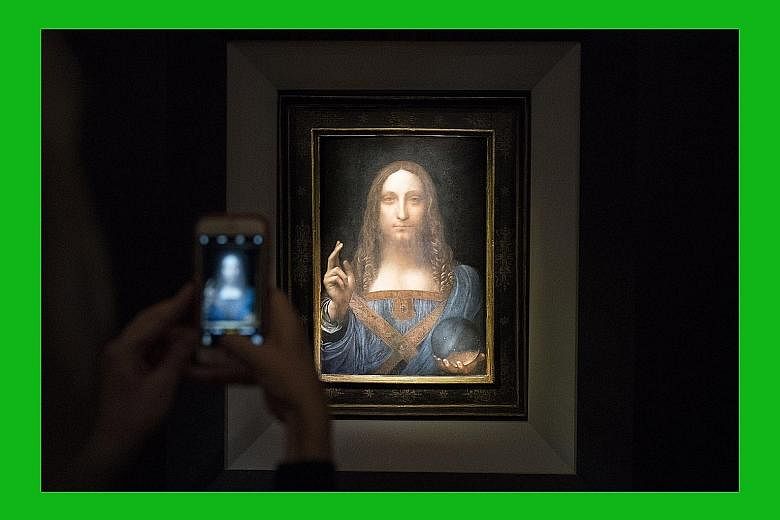NEW YORK • Before it sold, the debate about a painting that some scholars and a very assertive auction house believe is by Leonardo da Vinci was all about authenticity.
The artwork, Salvator Mundi, which was sold for US$450.3 million (S$611 million) at auction on Wednesday, had been so aggressively cleaned and over-painted that it had long been assumed to be a copy of a da Vinci by another, far lesser-known artist.
But after extensive restoration, it looked sufficiently like a da Vinci that auction house Christie's secured a US$100-million bid to begin Wednesday's auction.
So, now the question is, will that astonishing amount of money banish doubts about its authenticity?
Logically, one should say: Of course not.
Although some serious scholars believe the painting, which depicts Jesus holding a transparent crystal orb in his left hand, can be attributed to the Renaissance master, the restoration was so thoroughgoing that it might be safer to say: There is possibly some da Vinci in there.
Those who are convinced it is by the artist point to games the artist played with clarity and focus, the way some details are strikingly clear, but other areas seem slightly blurry. Others find material evidence and details of brush work convincing.
Between the time the unrestored painting was sold at an estate sale in 2005 for US$10,000 and its arrival on the world scene as a long-lost da Vinci at the National Gallery in London in 2011, the painting has come to life with significant modern retouching.
If nothing else, the astonishing amount someone or some institution paid for this work (the buyer has not been named) proves that with a handful of artists, da Vinci pre-eminent among them, any amount of authenticity is sufficient for marketers, salesmen and audiences who crave sacred objects.
This is disconcerting to people who have trained themselves to think sceptically about attributions.
Over the last 700 years or more, a lot of magnificent art has been produced that cannot be definitively ascribed to any particular artist.
Sometimes, works are by more than one artist. Sometimes, the artist's name has simply been lost to history. Sometimes, an apprentice, who painted a few details in a work largely by his master, becomes more famous than his teacher.
In that case, which artist gets the credit? The measured way to think about this is: Focus on the art itself and do not ascribe mystical value to the attribution.
However, the power of the brand, especially brands as well known and revered as da Vinci's, inevitably wins out. A quasi-religious hysteria takes over and a painting that possibly has some da Vinci in it becomes a sacred relic, something touched by the master.
Christie's manipulated this sale with every resource at its disposal, manufacturing a public spectacle that was designed from the beginning to be a "viral" event.
It put the painting up for sale at one of its auctions of contemporary art, a field in which the prices are usually higher, the bubble of belief more effervescent and the tendency to healthy scepticism more attenuated.
If it was bought by a Western art museum (which seems unlikely given the price tag), then that institution will be heavily invested in continuing the promotion of its authenticity.
If it was bought by an individual, the question will be: What did he pay for?
What was being sold was not a painting or an image or even an idea by da Vinci. It was a relic of physical touch.
For that, people are willing to do astonishing things, such as pay $611 million or travel across oceans and queue up for hours to stand momentarily at the back of a crowd staring intently at a little painting orphaned inside a thick box of protective glass.
WASHINGTON POST
•The writer is the Pulitzer Prize-winning art and architecture critic of The Washington Post.

